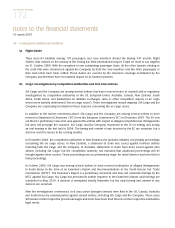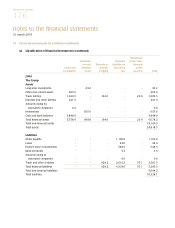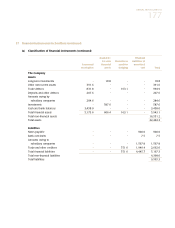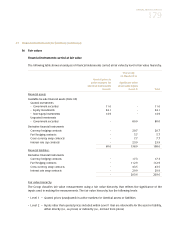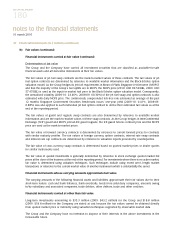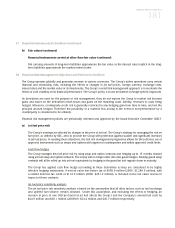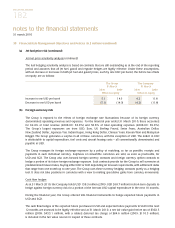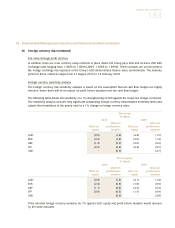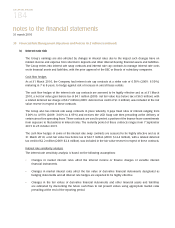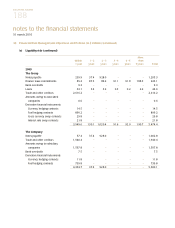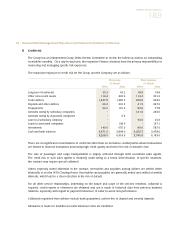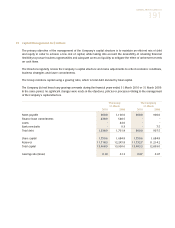Singapore Airlines 2010 Annual Report Download - page 184
Download and view the complete annual report
Please find page 184 of the 2010 Singapore Airlines annual report below. You can navigate through the pages in the report by either clicking on the pages listed below, or by using the keyword search tool below to find specific information within the annual report.
SINGAPORE AIRLINES
182
notes to the financial statements
31 march 2010
38 Financial Risk Management Objectives and Policies (in $ million) (continued)
(a) Jet fuel price risk (continued)
Jet fuel price sensitivity analysis (continued)
The fuel hedging sensitivity analysis is based on contracts that are still outstanding as at the end of the reporting
period and assumes that all jet fuel, gasoil and regrade hedges are highly effective. Under these assumptions,
with an increase or decrease in both jet fuel and gasoil prices, each by one USD per barrel, the before tax effects
on equity are as follows:
The Group The Company
31 March 31 March
2010 2009 2010 2009
Effect on equity Effect on equity
Increase in one USD per barrel 5.1 14.3 4.2 11.8
Decrease in one USD per barrel (5.1) (14.3) (4.2) (11.8)
(b) Foreign currency risk
The Group is exposed to the effects of foreign exchange rate fluctuations because of its foreign currency
denominated operating revenues and expenses. For the financial year ended 31 March 2010, these accounted
for 62.4% of total revenue (2008-09: 63.0%) and 58.6% of total operating expenses (2008-09: 69.0%).
The Group’s largest exposures are from USD, Euro, UK Sterling Pound, Swiss Franc, Australian Dollar,
New Zealand Dollar, Japanese Yen, Indian Rupee, Hong Kong Dollar, Chinese Yuan, Korean Won and Malaysian
Ringgit. The Group generates a surplus in all of these currencies, with the exception of USD. The deficit in USD
is attributable to capital expenditure, fuel costs and aircraft leasing costs – all conventionally denominated and
payable in USD.
The Group manages its foreign exchange exposure by a policy of matching, as far as possible, receipts and
payments in each individual currency. Surpluses of convertible currencies are sold, as soon as practicable, for
USD and SGD. The Group also uses forward foreign currency contracts and foreign currency option contracts to
hedge a portion of its future foreign exchange exposure. Such contracts provide for the Group to sell currencies at
predetermined forward rates, buying either USD or SGD depending on forecast requirements, with settlement dates
that range from one month up to one year. The Group uses these currency hedging contracts purely as a hedging
tool. It does not take positions in currencies with a view to making speculative gains from currency movements.
Cash flow hedges
As at 31 March 2010, the Company holds USD 158.3 million (2009: USD 268.7 million) in short-term deposits to
hedge against foreign currency risk for a portion of the forecast USD capital expenditure in the next 10 months.
During the financial year, the Group entered into financial instruments to hedge expected future payments in
USD and SGD.
The cash flow hedges of the expected future purchases in USD and expected future payments in SGD in the next
12 months are assessed to be highly effective and at 31 March 2010, a net fair value gain before tax of $302.5
million (2009: $455.1 million), with a related deferred tax charge of $84.6 million (2009: $110.5 million),
is included in the fair value reserve in respect of these contracts.


